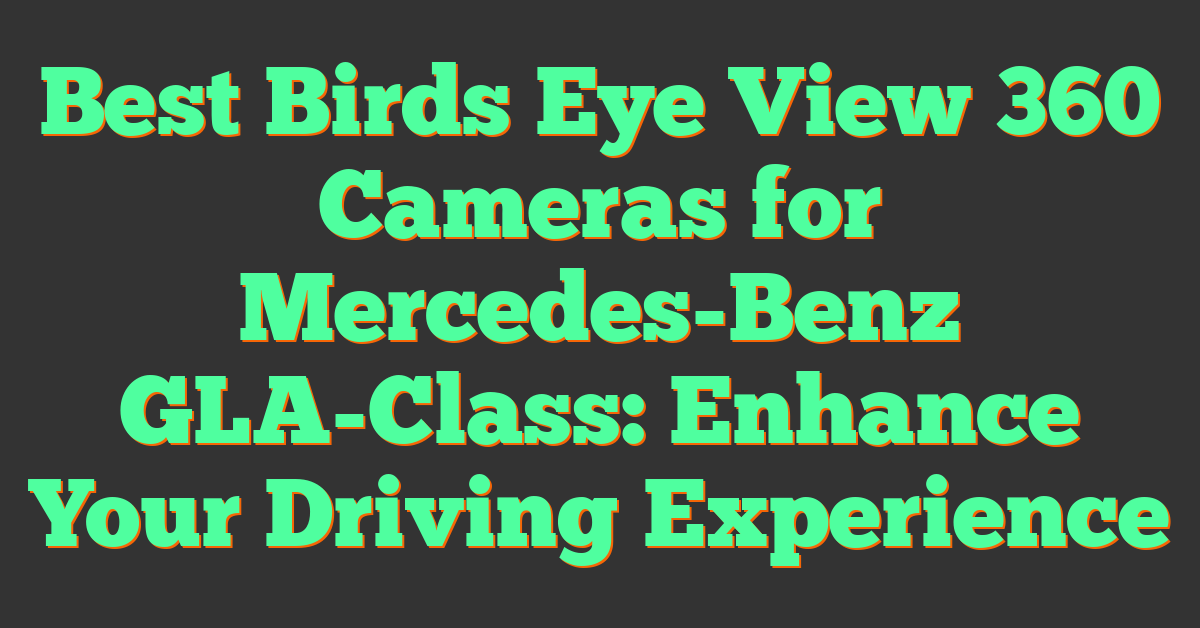Key Takeaways
- 360 cameras capture full 360-degree perspectives, enabling immersive photos and videos for creative and professional uses.
- They offer unique benefits like interactive content creation, panoramic views, and compatibility with virtual reality platforms.
- Major limitations include high costs, lower resolution compared to traditional cameras, and resource-intensive editing requirements.
- Emerging advancements, such as AI-powered processing and 8K video capabilities, are enhancing image quality and usability.
- Increasing affordability and integration with platforms like YouTube and VR tools are driving broader adoption of 360 camera technology.
- As AR and VR technologies expand, 360 cameras are becoming essential tools for industries such as real estate, travel, and education.
Capturing the world in every direction has never been easier, thanks to 360 camera technology. These innovative devices are changing how we record memories, create immersive content, and even enhance professional workflows. From stunning panoramic views to interactive virtual tours, 360 cameras offer a unique perspective that’s hard to match.
But like any technology, they come with their own set of challenges. Are they worth the investment? Do their benefits outweigh the drawbacks? In this article, I’ll dive into the pros and cons of 360 camera technology, helping you decide if it’s the right fit for your needs.
What Is 360 Camera Technology?
360 camera technology captures an entire scene in one shot, producing immersive photos or videos with a full 360-degree field of view. These cameras use multiple lenses, typically two or more ultra-wide-angle ones, to record overlapping perspectives. Advanced software then merges these perspectives into a seamless spherical image or video.
Unlike traditional cameras, 360 cameras allow viewers to pan and explore every angle of a scene. This makes them ideal for creating interactive content, such as virtual tours or engaging social media posts. These cameras have gained popularity among photographers who enjoy experimenting with new methods of storytelling.
The output of a 360 camera can be viewed on various platforms, including smartphones, dedicated apps, and VR headsets. Depending on resolution and stitching quality, the results range from casual snapshots to professional-grade media.
Key Features Of 360 Camera Technology
360 camera technology offers groundbreaking capabilities for capturing immersive and interactive content. Whether you’re a photographer, videographer, or simply exploring new creative tools, understanding these key features is essential.
Immersive Photography And Video
360 cameras create fully immersive imagery by capturing every angle of a scene simultaneously. Using dual or multiple ultra-wide-angle lenses, they produce seamless spherical photos and videos that allow viewers to interact with the content by panning in any direction. This capability makes them perfect for creating virtual tours, action footage, and storytelling content where viewers can feel entirely involved in the scene. High-end models, like the Insta360 X3 and GoPro MAX, achieve this through advanced image stitching and stabilization, delivering professional-grade results.
Wide-Angle Views
Unlike standard cameras, 360 cameras provide panoramic coverage without needing to move or manipulate the device. A single shot encompasses the entire surroundings, offering unmatched perspectives ideal for outdoor landscapes, events, and architecture. Their ability to capture expansive views contributes to a more dynamic frame, saving time and effort in post-processing. Devices such as Kandao QooCam deliver exceptional field-of-view potential through innovative lens designs and comprehensive resolution standards.
Compatibility With VR
360 camera outputs integrate seamlessly with virtual reality platforms, opening avenues for immersive viewing experiences. They create content specifically designed for VR headsets, enabling lifelike interactions that enhance storytelling and training simulations. Popular platforms like Oculus and HTC Vive support these formats, making the technology valuable for industries such as real estate, travel, and education. Pairing captured footage with VR workflows unlocks a new level of audience engagement.
Pros Of 360 Camera Technology
« Action 360 Cameras Explained: Who Needs Them and Why They’re a Game-Changer
Are Security 360 Cameras Worth the Investment? Discover the Pros, Cons, and Hidden Benefits »
360 camera technology offers several advantages that elevate creativity and storytelling for photography and videography enthusiasts. Below are the key benefits that make these cameras stand out.
Enhanced User Experience
The immersive nature of 360 cameras transforms how users capture and view content. Unlike traditional cameras, they record every angle of a scene simultaneously, eliminating worries about framing. Viewers gain control over their perspective by panning through the footage, creating highly interactive and engaging experiences. VR compatibility amplifies this interactivity, making it exceptional for virtual tours or cinematic storytelling.
Versatility In Applications
360 cameras adapt to various creative and professional needs. They’re perfect for capturing expansive landscapes, documenting live events, and producing unique travel content. Industries like real estate use them to create virtual walkthroughs, while educators employ these cameras for interactive training simulations. I find their ability to shift between casual and professional use invaluable—whether I’m documenting a personal trip or working on immersive brand campaigns.
Easy Sharing Across Platforms
Most 360 cameras come with software that simplifies sharing. Popular models like the GoPro MAX and Insta360 X3 allow direct uploads to platforms like YouTube, Facebook, and Instagram, which support 360-degree formats. In my experience, sharing content with interactive panning adds significant engagement, as viewers enjoy exploring every angle. Additionally, 360 outputs can be converted into flat video or photo formats when needed.
Cons Of 360 Camera Technology
While 360 cameras offer unique benefits, there are drawbacks that impact their usability and efficiency. Photographers, videographers, and tech enthusiasts should weigh these limitations against the technology’s advantages.
High Costs
360 cameras can be expensive, especially for professional-grade models. High-quality devices like the Insta360 Titan or GoPro MAX cost $499–$15,000, depending on features such as resolution, stabilization, and software compatibility. The initial expense can be a barrier for hobbyists or those exploring the technology. Additionally, accessories like VR headsets, tripods, and external storage add to overall costs.
Limited Resolution And Quality
Despite advancements, resolution remains a challenge for 360 cameras. Even high-end models capturing 5.7K or 6K footage often lack the sharpness seen in traditional 4K cameras when cropped or viewed on large screens. Because 360 imagery spreads pixel data across a sphere, visible quality can appear lower in comparison. Stitching imperfections, motion blur, or low-light artifacts further impact image quality, hindering usage in certain professional projects.
Editing And Storage Challenges
Processing 360 files is resource-intensive. Editing requires powerful hardware capable of handling large video files, with software like Adobe Premiere Pro or Insta360 Studio. For instance, stitching a single five-minute 360 clip may take hours on slower systems. File sizes are substantial—5.7K footage averages around 1.2 GB per minute—placing a demand on storage solutions and cloud backups. Managing this requires advanced technical skills, discouraging beginners or casual users.
Future Of 360 Camera Technology
360 camera technology continues to evolve, offering exciting possibilities for photographers and videographers. As someone passionate about virtual reality content, I see significant advancements shaping the future of this innovative field.
Emerging Innovations
Technological advancements are enhancing 360 cameras in several areas. AI-powered image processing is improving stitching accuracy, dynamic range, and noise reduction, resulting in cleaner, more seamless imagery like never before. For instance, AI-driven workflow tools now enable automatic re-framing and subject tracking, which streamline editing for professionals and hobbyists alike.
Hardware improvements are also expanding possibilities. Compact sensors with higher resolutions, such as cameras pushing beyond 8K video recording, are becoming more accessible for creators seeking professional-grade results. Enhanced optical designs are reducing fisheye distortion and increasing edge sharpness. Additionally, real-time live streaming in 360 view is gaining traction, especially for events and virtual reality applications.
Another area of innovation is integration. Cameras like the Insta360 ONE RS are incorporating modular systems that combine traditional 4K video capabilities with 360 capture, offering flexibility for diverse shooting scenarios. This trend blurs the line between traditional photography and immersive media.
Potential For Broader Adoption
The accessibility of 360 camera technology is growing, thanks to affordability and user-friendly interfaces. More brands are offering mid-range models like the Ricoh Theta X, which deliver impressive results without the hefty price tag of professional rigs. This makes it easier for casual users to explore interactive storytelling without significant investment.
Increased integration with social media platforms is simplifying sharing. Cameras now natively support uploads to apps like Facebook and YouTube, allowing creators to share immersive 360 videos or photos quickly. As VR adoption widens, industries like real estate, travel, and entertainment are embracing these cameras for virtual tours, boosting demand.
The rise of AR and VR technologies may make 360 imagery essential in the near future. VR headsets, when paired with high-quality spherical content, offer unparalleled immersion. This convergence is contributing to new creative opportunities for training, simulations, and experiential marketing efforts. Professionals venturing into these fields are likely to see 360 cameras as indispensable tools.
In my experience, the path forward for 360 camera technology looks bright, both due to emerging innovations and its growing potential across industries.
Conclusion
360 camera technology has opened up exciting possibilities for capturing and sharing immersive content. Whether you’re a professional creator or a casual user, these cameras offer unique perspectives that traditional devices simply can’t match. While challenges like cost, resolution, and editing complexity remain, ongoing advancements are steadily addressing these limitations.
As the technology evolves, its potential applications in industries like real estate, education, and entertainment will only grow. For those willing to embrace the learning curve, 360 cameras provide a powerful tool for storytelling and engagement. The future of this innovative technology looks incredibly promising.















